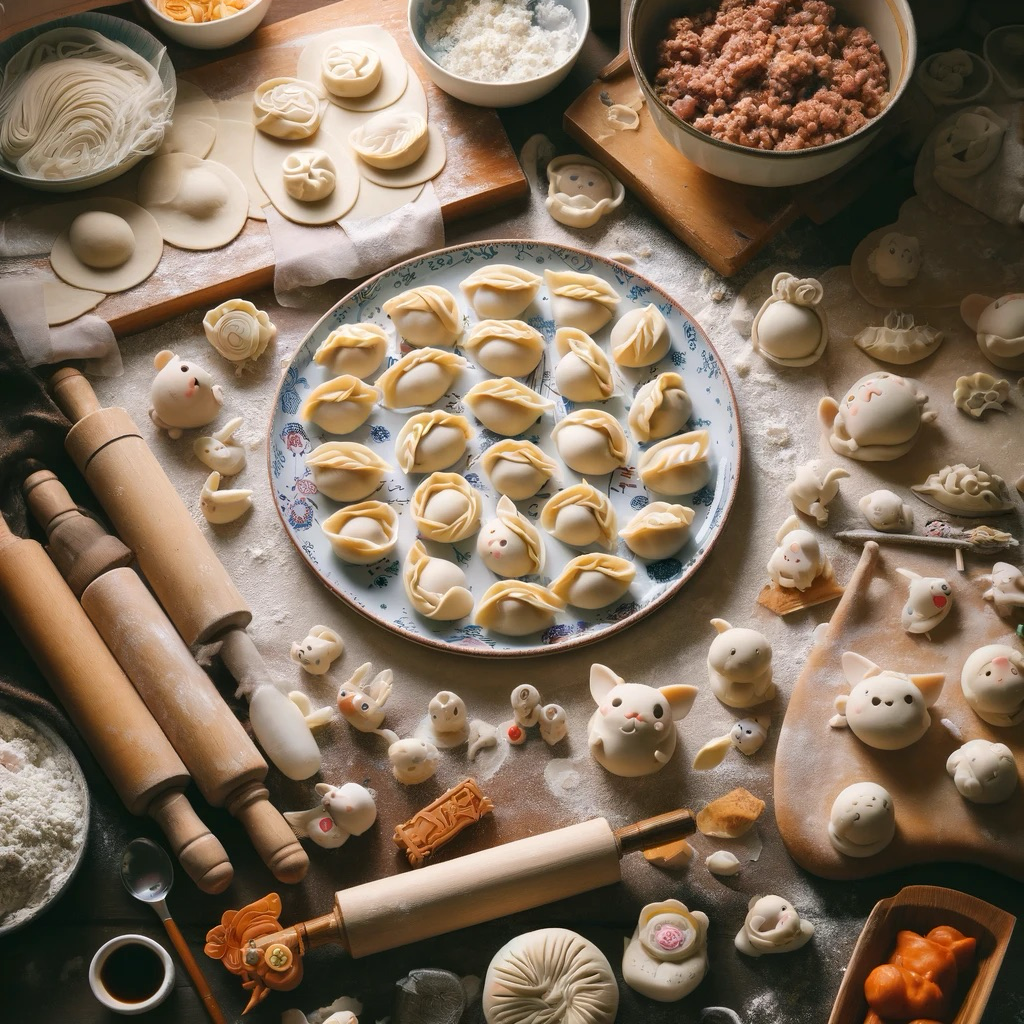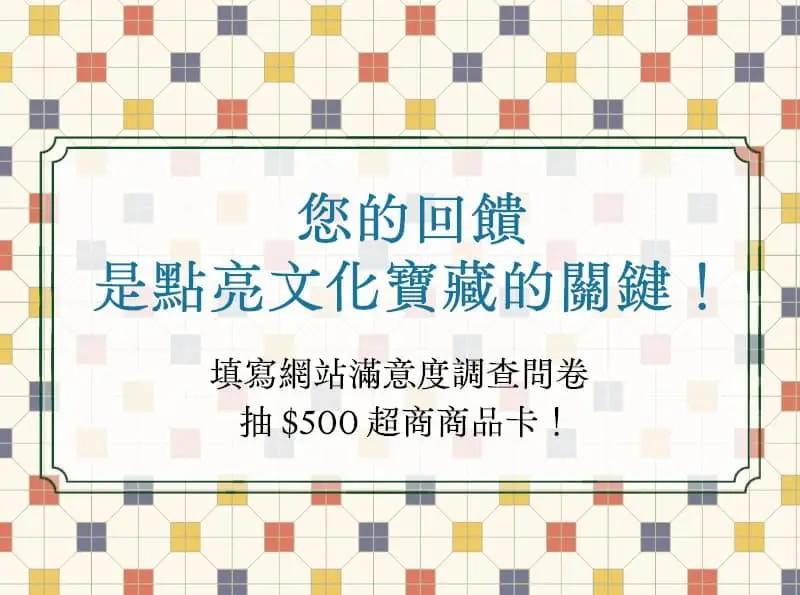玉米濃湯很簡單,但隨著不同的料理人會有不同的料理方式,這次想要加火腿跟蔥花,偶爾我也會想要加雞肉末或豬絞肉、紅蘿蔔丁等等不同的變化。
而第二次聽著背景音我到了傳統市場,但常常被引導者的聲音抽離,因為傳統市場的氣味非常的多元,並非超市會有的玻璃門,跟統一結帳的方式。
而且菜販們可以跟大家互動,獨特的叫賣方式,也迴響在腦海之中。也有機會互相聊天認識近況,跟看到現在季節性的農產品,不像超市無法體會到殺價跟農特產與節氣明顯的差異。
回到家了我這次想煮水餃,因為水餃是我們家庭過年的記憶,每年除夕夜長輩會負責準備料,晚輩則是負責包水餃,而在兒時時光,我們會玩著水餃皮,包各種樣式的水餃。
在身體引導的過程當中,我只準備到備料水餃,在醒麵跟拌好餡料的部分。
連包水餃跟下水餃的時間都沒有,覺得如果當時的身體飲食記憶是公夫菜可能操作的時間不夠。
我覺得身體記憶喚醒我過去時光對於飲食及文化歷史的映像,在喚醒身體的過程中,讓埋藏在潛意識裡的飲食文化記憶,重新再現在這裡。也讓我想起我們家過年的飲食傳統是獨一無二的,而且可能和臺灣一個移民島的文化脈絡有不同的連結。
In this recent experience, I prepared two dishes. The first one was a simple corn chowder, which can be easily enjoyed alone or with family. It's a staple in many Western restaurants, especially during celebrations. Corn chowder is simple but can vary depending on the cook. This time, I wanted to add ham and green onions, and sometimes I also like to add minced chicken or pork, and diced carrots for variety.
The second time, I found myself at a traditional market while listening to the background sounds. However, I was often pulled out of the experience by the guide's voice because the diverse scents of the traditional market are very different from the supermarket's uniform environment with glass doors and standardized checkout processes. In the market, vendors interact with customers, and their unique cries echo in my mind. There's also the chance to chat and learn about each other's current situations and see the seasonal produce, unlike supermarkets where you can't experience haggling or the clear seasonal differences in agricultural products.
Back home, I wanted to make dumplings this time. Dumplings are a part of our family's New Year's memories. Every New Year's Eve, the elders would prepare the fillings while the younger ones wrapped the dumplings. In my childhood, we would play with the dumpling skins and make various shapes.
During the guided body experience, I only managed to prepare the ingredients for the dumplings, including waking up the dough and mixing the filling. I didn't have time to wrap or cook the dumplings. It felt like if the memory involved a more complex dish, the time might not be enough to complete it.
I think this body memory awakened my past impressions of food and cultural history. It brought back the culinary cultural memories buried in my subconscious and reminded me that our family's New Year food traditions are unique. These traditions might have different connections to Taiwan's cultural context as an immigrant island.
-
《島嶼未來料理教室》Future Formosa Culinary Lab Profile Nr.025
31-40歲的高雄市大魚大肉者,平均花費100元在餐費上。因為過年吃除夕夜自己包的餃子而對飲食記憶留下深刻印象。如果世界末日終將來到,會選擇與家人共享這一餐。關於家庭的一道料理,她提到除夕夜包餃子。
"Feast lover"
Female(31-40 yrs)/ Kaohsiung City / 100 NTD per meal
Profound dining impressions were shaped by eating self-made dumplings on Chinese New Year's Eve.
If the end of the world were to come, she would choose to share this meal with her family.
As for a family dish, she mentioned self-made dumplings on Chinese New Year's Eve.
-
國立臺灣歷史博物館的第 1 個「公共飲食記憶 NFT 化」實驗計畫《超時空島嶼餐桌》
National Museum of Taiwan History's First NFT Experimental Project on Public Dining Memories《Time-Space Dining Tables》
「國立臺灣歷史博物館」為推動國家文化記憶庫之永續發展,融入當代議題、常民生活及在地關懷,連結博物館專業、數位創新思維與多元社群行動,以促進臺灣原生文化之活化運用,鼓勵全民共同開展記憶庫多元主題與主題素材近用。
本計畫案於112年推出《島嶼庫客 Islands Cooker》飲食記憶系列7支影片,探究臺灣飲食的歷史成因,113年延續「餐桌」的概念,加入「未來」元素,委由畸零地創造股份有限公司辦理《島嶼未來料理教室——NFT設計工作坊》,以記憶庫長期深耕之飲食記憶主題,透過非同質化代幣(Non-Fungible Token,以下簡稱 NFT)設計工作坊,增進記憶庫之內容與應用,落實臺灣原生文化之推廣。
《島嶼未來料理教室——NFT設計工作坊》以「推測設計」為核心,反思記憶料理的獨特性,其之於 NFT的當代意義及其飲食文化價值,並將工作坊延伸設計為「發掘身體飲食記憶,運用想像和推測來創造未來島嶼飲食文化」的參與式體驗活動。工作坊由編舞家與引導師,透過一連串的帶領、想像和對話,挖掘及連結蘊藏身體感知中的飲食記憶,並讓參與者書寫飲食記憶;接著由畸零地工作室與生成式AI 「ChatGPT 4o」協作製作出 「記憶食譜 NFT」及文字翻譯;最後線上場以「圍爐」的概念,讓參與者在雲端上互相分享與交流。
這些飲食記憶透過NFT不可替代、數位交換的特性,被永久保存並流傳,期望每個人都能回首屬於自己的飲食記憶和歷史,經由公共化的途徑與媒介,成為社會記憶的一部份,構築社群認同的可能。
To promote the sustainable development of the Taiwan Cultural Memory Bank, the National Museum of Taiwan History integrates contemporary issues, ordinary life, and local concerns. By combining museum expertise, digital innovation, and diverse community actions, it aims to revitalize and utilize Taiwan's indigenous culture. The museum encourages the public to collaboratively develop and access various themes and materials within the memory bank.
This project launched the "Islands Cooker" series of seven videos on culinary memories in 2023, exploring the historical origins of Taiwanese cuisine. Continuing with the concept of the "dining table" and incorporating "future" elements in 2024, the project entrusted Ground Zero Co., Ltd. to handle the "Islands Future Cuisine Classroom—NFT Design Workshop." By delving into the long-term themes of culinary memories from the Taiwan Cultural Memory Bank and utilizing the Non-Fungible Token (NFT) design workshop, the project aims to enhance the content and application of the memory bank, promoting the dissemination of Taiwan's indigenous culture.
The "Islands Future Cuisine Classroom—NFT Design Workshop" centers on "speculative design," reflecting on the uniqueness of memory cuisine and its contemporary significance and culinary cultural value in relation to NFTs. The workshop is extended into a participatory experiential activity, designed as "discovering culinary memories in body and using imagination and speculation to create future island culinary culture." The workshop, led by choreographers and facilitators, guides participants through a series of activities, including imagination and dialogue, to uncover and connect with culinary memories embedded in their bodily perceptions. Participants then write down their culinary memories. Next, Ground Zero Co., Ltd. collaborates with the generative AI "ChatGPT 4o" to create "Memory Recipe NFTs" and translate the texts. Finally, the online session, based on the concept of "reunion dinner," allows participants to share and exchange their experiences and creations in the cloud.
These culinary memories, preserved and circulated through the non-fungible and digital exchange characteristics of NFTs, are expected to be permanently stored and shared. The goal is for everyone to reflect on their own culinary memories and histories, making them part of societal memory through public pathways and media, thereby fostering a sense of community identity.
※本圖像為AI生成內容
※This image is AI-generated content.












